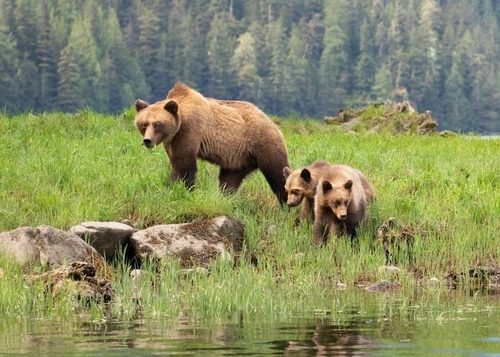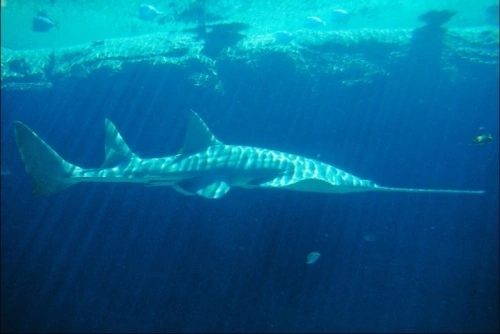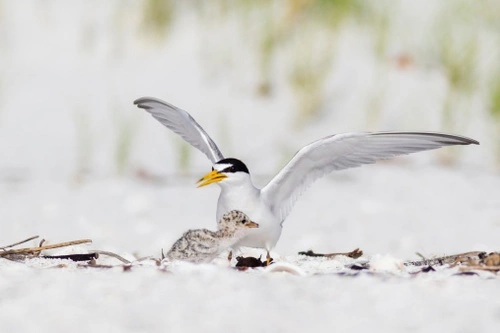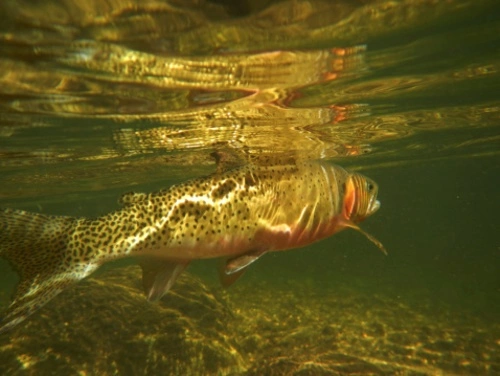The U.S. District Court for the District of Montana has approved a partial settlement between the Center for Biological Diversity (CBD) and the U.S. Fish and Wildlife Service (Service) requiring that the Service complete and post a status review of the lower-48 grizzly bear (Ursus arctos horribilis) populations no later than March 31, 2021. Earlier this year, CBD filed a lawsuit challenging the Service’s alleged failure to update a 1993 federal recovery plan for the species. The partial settlement disposes of CBD’s first claim for relief, which alleged that the Service had ...
Today, the U.S. Senate confirmed Aurelia Skipwith as the Director of the U.S. Fish and Wildlife Service (USFWS) by a vote of 52-39. Ms. Skipwith’s confirmation fell mostly along party lines, with three Democratic Senators joining Republicans in approving the nomination. With Ms. Skipwith’s confirmation, the USFWS will have its first Director of the USFWS since the beginning of the Trump Administration.
Prior to her confirmation, Ms. Skipwith served as the Interior Department’s Deputy Assistant Secretary for Fish, Wildlife and Parks. She is a co-founder and former general ...
On November 21, 2019, the California Secretary for Natural Resources announced California’s decision to sue the federal government over its biological opinions for continuing operations of the California State Water Project (SWP) and federal Central Valley Project (CVP).
The Projects provide water to over 20 million of Californians and support the businesses and farms across the state. In his announcement, the Secretary notes that “Difficult trade-offs have to be made unless we can find creative solutions that balance all water needs. And even then, sometimes tough ...
On November 1, 2019, Chad Ponce of Jacksonville, Florida pleaded guilty to killing a smalltooth sawfish (Pristis pectinata), an endangered species protected under the federal Endangered Species Act (ESA) and Florida Endangered and Threatened Species Act . Sawfishes are a family of rays characterized by a long, narrow, flattened rostrum, or nose extension, lined with sharp teeth, arranged in a way that resembles a saw. Sawfish use that rostrum to sense and attack prey; without it, they can’t survive. They are among the largest fish, with some species reaching lengths of up to 17-18 ...
Please join Brooke Wahlberg and Steve Quarles as they co-chair CLE International’s 3rd Annual MBTA & BGEPA Conference, happening on December 9-10, 2019, in Denver, CO.
Named as both an “Energy & Environmental Trailblazer” by the National Law Journal, and a “Legend of Environmental Law” by the D.C. Bar Association, Steve is a veteran attorney who focuses his practice on addressing issues concerning federal wildlife laws (Endangered Species Act (ESA), Migratory Bird Treaty Act (MBTA) and Bald and Golden Eagle Protection Act (BGEPA)), federal lands and resources ...
On October 24, 2019, the U.S. Fish and Wildlife Service (FWS) published a proposed rule in the Federal Register announcing the agency’s finding that the interior least tern (Sterna antillarum) is no longer warranted for listing as an endangered species under the Endangered Species Act (ESA).
The interior least tern, the smallest of the tern species in North America, was first observed in 1804 by explorers Meriwether Lewis and William Clark. The fish-mongering bird currently nests adjacent to major U.S. rivers within the Lower Mississippi Valley and the Great Plains region across ...
On October 7, 2019, the U.S. Fish and Wildlife Service (FWS) published a notice in the Federal Register announcing the agency’s 12-month findings that a dozen species are not warranted for listing as endangered or threatened species under the Endangered Species Act (ESA). In particular, the FWS decided not to list the yellow-cedar (Callitropsis nootkatensis), a slow-growing but commercially in-demand tree that occurs from southern Alaska to northern California. According to the FWS, yellow-cedars can live 500 to 700 years, with some individuals documented up to 1,600 years ...
In a recent opinion, the United States Court of Appeals for the Ninth Circuit reversed in part the United States District Court for the Eastern District of California’s grant of summary judgment to the National Marine Fisheries Service (“NMFS”) in Friends of the River v. NMFS, No. 18-15623 (9th Cir. Oct. 3, 2019).
Plaintiff Friends of the River (“FOR”) challenged (1) NMFS’ decision to characterize the existence of federally-managed dams on the Yuba River as part of the environmental baseline in a 2014 BiOp and Letter of Concurrence (“LOC”) issued to the Corps for the ...
On September 26, 2019, the U.S. District Court for the District of Colorado vacated and remanded in part the U.S. Fish and Wildlife Service’s (Service) 2014 determination that listing the Rio Grande cutthroat trout (Oncorhynchus clarki virginalis) under the Endangered Species Act (ESA) was not warranted.
The Rio Grande cutthroat trout is native to high-altitude streams in southern Colorado and New Mexico. In 2008, the Service determined that the Rio Grande cutthroat trout warranted listing as an endangered or threatened species, although listing was precluded by other higher ...
Yes, if the animal is designated as threatened or endangered under the federal Endangered Species Act (ESA). In a recent federal court decision out of Massachusetts, a United States District Court was called on to decide whether a local zoo’s treatment of two endangered Asian elephants amounted to “harm” or “harassment” in violation of the “take” prohibition under section 9 of the ESA.
The two elephants, Emily and Ruth, were longtime residents of the Buttonwood Park Zoo in the City of New Bedford, Massachusetts. In fact, according to the decision, Emily and Ruth are ...
Nossaman’s Endangered Species Law & Policy blog focuses on news, events, and policies affecting endangered species issues in California and throughout the United States. Topics include listing and critical habitat decisions, conservation and recovery planning, inter-agency consultation, and related developments in law, policy, and science. We also inform readers about regulatory and legislative developments, as well as key court decisions.
Stay Connected
 RSS Feed
RSS Feed
Categories
- Alternative Energy
- Bald and Golden Eagle Protection Act
- Budget
- CEQA
- CESA
- Climate Change
- Congress
- Conservation
- Construction Projects
- Consultation
- Continuing Education
- Court Decisions
- Critical Habitat
- Delisting
- Endangered Species Act
- Event
- Fish & Wildlife Service
- Freedom of Information Act
- Government Administration
- Legal
- Legislation
- Listing
- Litigation
- Migratory Bird
- National Marine Fisheries Service
- NEPA
- Off Shore Wind
- Pacific Northwest
- project
- Publications
- Regulatory Reform
- Sacramento-San Joaquin Delta
- SEPA
- Speaking Engagements
- Supreme Court
- Texas
- Timberland
- Water Issues







